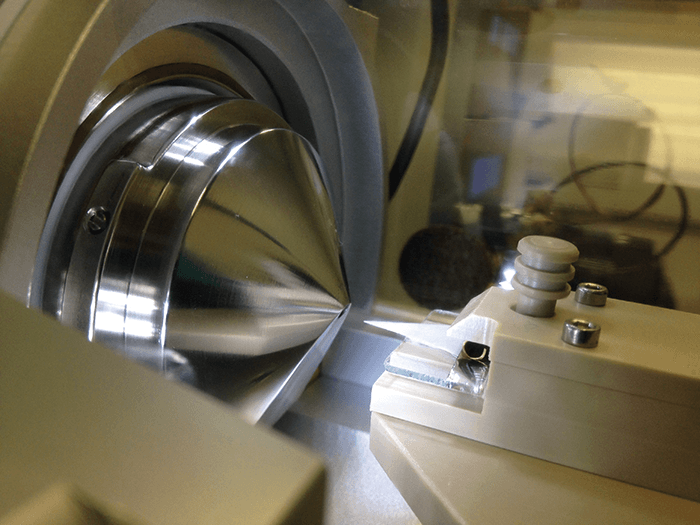Drug testing usually involves the collection and storage of blood and urine – potential biohazards that need to be properly stored and transported. A new drug testing method, developed by a team at the University of Surrey, UK, provides a quick and accurate method for detecting cocaine use – using the simple fingerprint. This is not the first time that fingerprint samples have been analyzed to detect drugs of abuse; but, says Catia Costa, first author of the study and a researcher at the University of Surrey’s Ion Beam Centre, previous methods have relied on extensive sample preparation steps as well as lengthy analysis time. “Our method is both quick and sensitive and can use samples that are less hazardous and easier to collect than blood and urine,” she says.
And what is this rapid, highly sensitive method? Paper spray ionization mass spectrometry. The fingerprint sample is collected on a piece of conventional chromatography paper, and placed on the paper spray source, before a solvent is added and a voltage applied (see Figure 1). This process extracts traces of cocaine and cocaine metabolites excreted by users (benzoylecgonine and methylecgonine), which are then directed to the mass spectrometer for detection. Analysis of 239 fingerprints from patients at a drug rehabilitation center and a control group of people not known to be drug users yielded a 99 percent true positive rate, and a false positive rate of 2.5 percent – even when study participants had washed their hands with soap before having their prints taken (1). Results take just four minutes per sample, and since the ridges of the fingerprint are visually established as part of the procedure, the identity of the donor can be identified.

Costa and collaborator Melanie Bailey first came across paper spray MS at a conference and were impressed by the excellent results attained in blood analyses; they decided to start exploring back at the lab. “We found that the technique is incredibly sensitive compared to other ambient mass spectrometry techniques and it does not require any sample preparation, which makes the sample turnaround time very short,” says Costa. “Crucially, it is non-invasive, hygienic and can’t be faked – by the nature of the test, the identity of the subject and their drug use is all captured within the sample itself.” The team have detected a range of different compounds, including prescription medication and explosives. The team now hope to commercialize the test and bring analysis time down – they are already working on a 30-second method.
References
- C Costa et al., “Rapid, secure drug testing using fingerprint development and paper spray mass spectrometry”, Clin Chem, [Epub ahead of print], (2017). PMID: 28939761.




